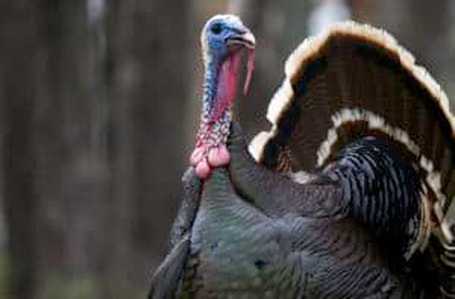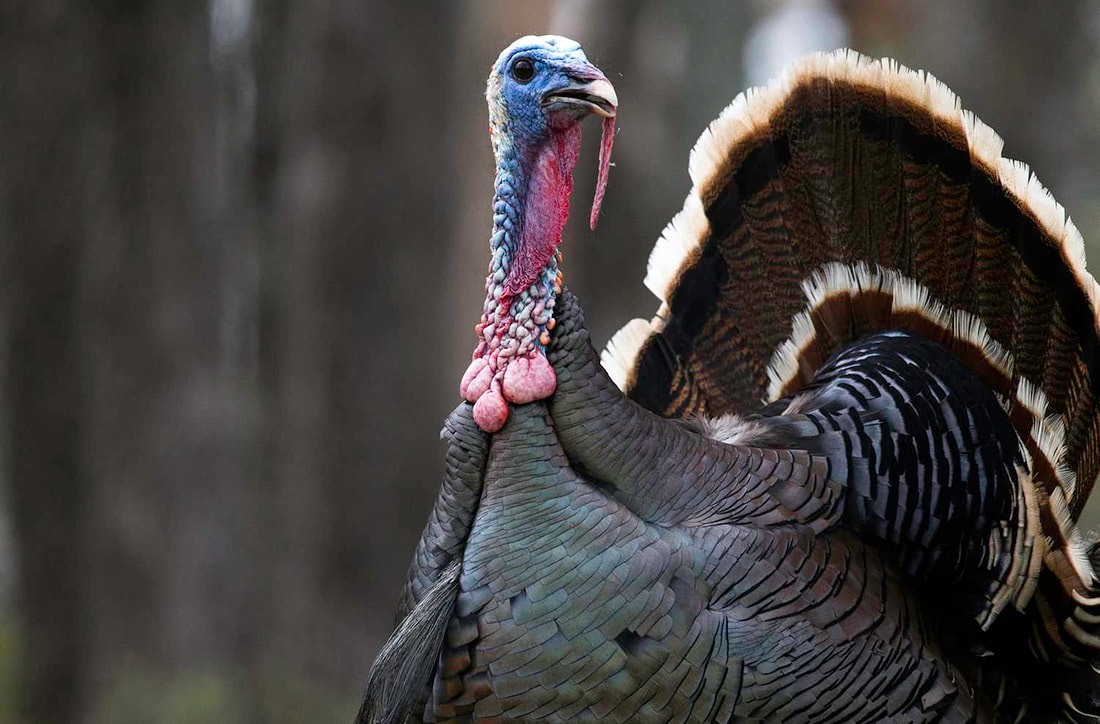Demise of 2022 study-sample hens and poults could just be a case of bad luck By KELLY BOSTIAN
For the CCOF Words like “dismal” and “depressing” describe the first season in one of Oklahoma’s new wild turkey population studies, but a lead researcher said now is not the time to jump to conclusions. Predators knocked the initial sample group down to nearly half and left a goose egg on the datasheets for young produced. The project is a 4.5-year effort for that very reason, said Dwayne Elmore, the Oklahoma Cooperative Fish and Wildlife Research Unit professor overseeing the tracking and reproduction portion of the project. “Don’t put too much stock in this data yet,” he said. “Stay tuned because three years from now it could be a whole different picture.” With a decline or stagnation in wild turkey populations across much of the state, the Oklahoma Department of Wildlife Conservation is looking for answers. The agency teamed up with researchers at Oklahoma State University and Texas A&M to look at DNA to determine wild turkey health and population dynamics, and to use tracking data to better understand habitat use and nesting success. The DNA work is a statewide effort. The tracking study kicked off in the southeast part of the state this spring and a southwest area will be added in 2023. One bad year Elmore acknowledged the first-year results are “pretty dismal” and said even researchers can get discouraged. “When you do all that work to find and capture birds and put transmitters on them and two weeks later they’re all dead, that can be pretty depressing,” he said. They also don’t want to see too many repeats like this first season. If they do, it will mean there are big problems for the state’s turkeys, Elmore said. Work started with 28 hen turkeys fitted with GPS or VHS radio trackers. Predators killed seven during mating season. Of 21 remaining, only nine are documented to have attempted a first nest and all those nests were lost. Of those hens, seven attempted a second nesting. By the first of June only four nests remained active. Predators took the eggs of one nest, two nests failed due to predators killing the hens and one nest of four eggs saw a successful hatch of three poults. The day after the poults were fitted with transmitters all three were killed. One died of unknown causes, one was killed by “a mammalian predator,” and one transmitter was found inside a cottonmouth snake. None of the hens attempted a third nest. Seeing less than half the 21 hens attempt a nest and only a third attempting a second nest was odd, Elmore said. In ideal conditions, the majority of hens will lay 12 or 13 eggs, one egg a day, in their first nests. A second nest often only holds a few eggs. Third nesting attempts are uncommon but possible. People assume all hens try to nest each spring but typically about 15 percent won’t even try. That can be due to any number of reasons; age, health or any variety of stress factors that impact a wild bird’s life, he said. Looking ahead Researchers found nests based on travel patterns that had a hen visit the same spot daily, or when hens started to sit to incubate. It could be that some hens lost nests in such an early stage that researchers didn’t even have a chance to notice a change in their movements, he said. Next year all the hens will have GPS tracking devices, which will give more precise tracking data for more birds, he said. Radio collars only help technicians find birds when they actively search for them in the field. Another change for next year will be DNA swabbing of all predated nests. That will help identify the culprits, he said. For example, a hen can easily defend a nest from an opossum so finding that an opossum took a nest is an indication the hen was not present and that the hit might have even been a random find. Finding coyote or bobcat DNA tells a very different story. “You always expect high nest loss, but this was much higher so we’re going to look closer at what’s going on there,” he said. Predation is always an expected factor with ground-nesting birds but one year’s results don’t show whether that is a function of poor nesting habitat, wet weather that makes hens and nests easier to find, or a high density of one kind of predator or several kinds, he said. With low numbers of nest attempts, high nest loss, and a high number of adult deaths this season with a variety of predators involved, from snakes to bobcats and coyotes, the questions that led to the study in the first place simply remain unanswered, he said. The basic questions are whether the population is increasing, decreasing, or plateaued, and why. Elmore has researched ground-nesting birds for many years, including quail and prairie chickens, and said that surprising changes happen season by season. That’s why studies must be several years long. “You will have good years and bad. Maybe we were just unlucky this year. Next year we could have 80 percent adult survival and 60 percent nest success and 30 percent poult survival,” he said. “At the end of four years, we will be able to project a population growth rate and will be able to identify what are the limiting factors.” Kelly Bostian is an independent journalist writing for The Conservation Coalition of Oklahoma Foundation, a 501c3 non-profit dedicated to education and outreach on conservation issues facing Oklahomans. To learn more about what we do and to support Kelly’s work, see the About the CCOF page.
0 Comments
Leave a Reply. |
Archives
May 2024
Categories
All
|
Conservation Coalition of Oklahoma
P.O. Box 2751
Oklahoma City, OK 73101
[email protected]



